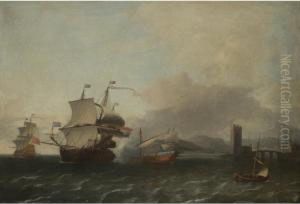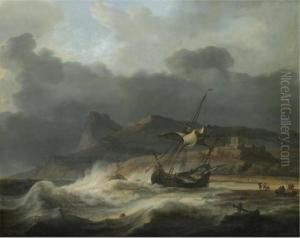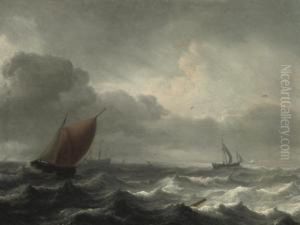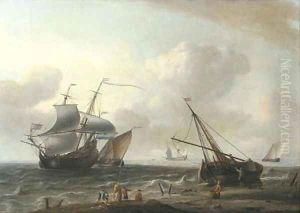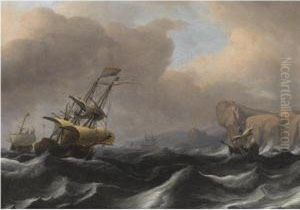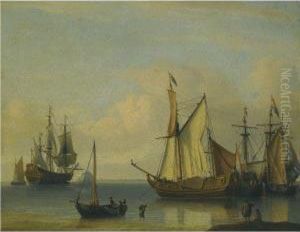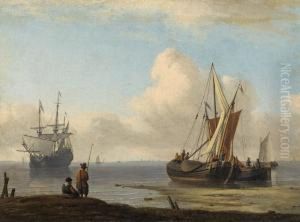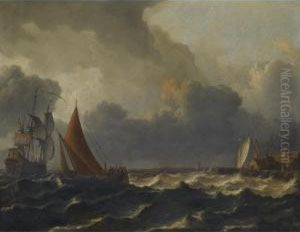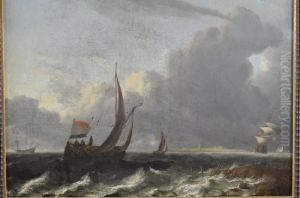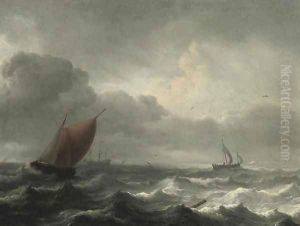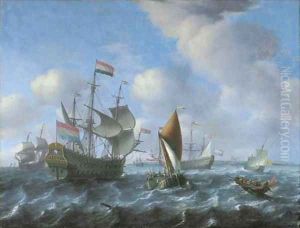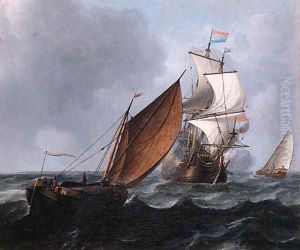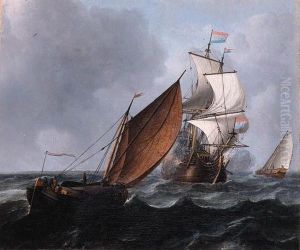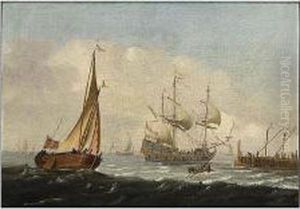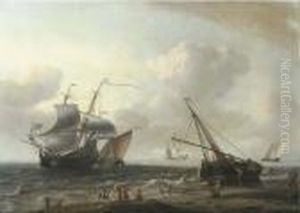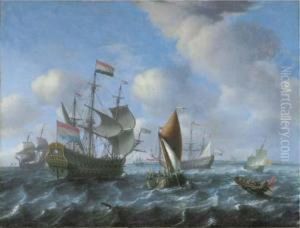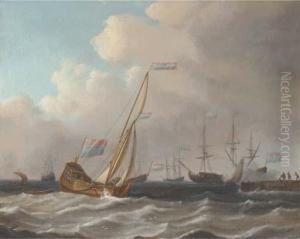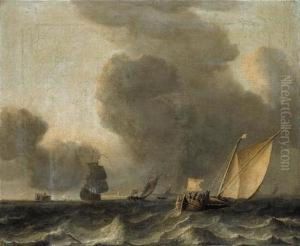Aernout Smit Paintings
Aernout Smit was a Dutch Golden Age painter, known primarily for his marine paintings, capturing the essence and beauty of the sea. Born in 1641 in Amsterdam, Netherlands, Smit's early life and training are not well-documented, but it is believed that he was initially influenced by the maritime city's thriving art scene and its connection to the sea. His work reflects a keen observation of maritime subjects, ranging from calm harbors to rough seas, often highlighting Dutch naval power and the bustling trade activities of the era.
Smit's paintings are characterized by their detailed ships, precise depiction of water, and the atmospheric effects of light and sky, showcasing his mastery in rendering the sea in all its moods. He was part of the Dutch Golden Age of painting, a period that is celebrated for its remarkable output in arts, science, and exploration, coinciding with the Dutch Republic's rise as a major maritime and economic power.
Though not as widely known as some of his contemporaries like Willem van de Velde the Elder and Younger, Smit carved a niche for himself with his distinctive style and contribution to marine art. His works were sought after by collectors and art lovers, contributing to the rich tapestry of Dutch maritime history and painting.
Aernout Smit's death in 1710 marked the end of an era for Dutch marine painting, but his legacy lives on through his vivid portrayals of the sea. His paintings are preserved in various museums and collections, serving as a testament to his skill and passion for the maritime world. Through his art, Smit provides a window into the Dutch Golden Age, offering insight into the era's maritime prowess and artistic achievements.


